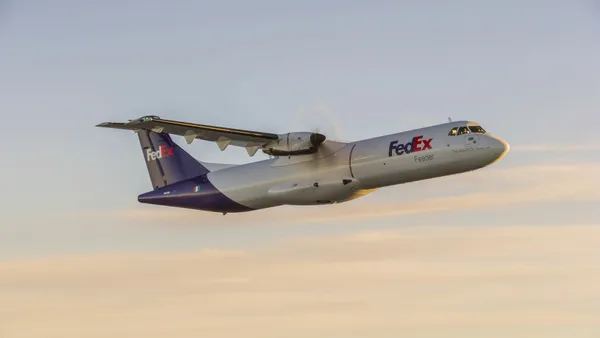Dive Brief:
- Ceva Logistics is managing General Motors' (GM) ventilator supply chain and will coordinate the delivery of components from hundreds of suppliers to the production facility in Indiana, the logistics company announced Wednesday in a press release. The partnership began at the beginning of April.
- Ceva's responsibilities include supplier management, order management, transportation and customs brokerage management, and event monitoring.
- So far, Ceva has used expedited trucking and air freight to get the parts from suppliers, located throughout North America and Asia, to the manufacturing facility in Kokomo, Indiana, Ceva Head of North America Shawn Stewart told Supply Chain Dive in an interview.
Dive Insight:
GM and Ceva are familiar with complex supply chains, but retooling a production facility is a significant undertaking.
The Indiana facility where the ventilators are produced used to be the site of semiconductor production. GM chose the location, in part, because the facility already has a clean room, which the Food and Drug Administration requires for the production of medical equipment, a union leader told the Kokomo Perspective.
GM is building Ventec’s critical care ventilator, the VOCSN. The automaker began meeting with Ventec in late March to figure out production, with teams meeting across manufacturing, engineering, purchasing and other functions, GM said in a press release last month.
"The Ventec and GM global supply base developed sourcing plans for the more than 700 individual parts that are needed to build up to 200,000 VOCSN," GM said.
The purchasing team began work on a Friday and proceeded to work through the weekend to identify suppliers for the ventilators, according to Michael Schwandt, a buyer for GM who spoke about the effort with Western Michigan University.
"GM immediately dispatched supplier quality engineers from around the world to support these suppliers to increase capacity under such high demand," Schwandt said, according to the university. "In one case, GM’s supply chain organization was able to increase capacity by 25 times the supplier’s prior build plan."
Within 48 hours of taking the job, Ceva was in contact with GM's selected suppliers. Each Ceva team member was assigned a number of suppliers and began talking to them about purchase orders, Stewart said, and set dates for when the inventory would be ready for transportation. About 85% of the suppliers were located between Canada, Mexico and the U.S.
The overall process was not all that different from the automotive-related supply chain work that Ceva has done with GM in the past, Stewart said. The biggest difference was working with hundreds of new suppliers.
Supplier and purchase order management was carried out by software that sits within Ceva's main shipping systems. The systems contain information on the inventory being ordered, the pickup date, the address. With that data, orders can be tracked throughout the delivery process, ensuring the information on the shipper declaration filed by the supplier matches what is on the purchase order. Ceva also took multiple calls every day with GM to go over supplier compliance, Stewart said
The quick turn around time required by the project did not allow for use of ocean freight for international suppliers.
"We had already procured a lot of air freight charters coming in from China," Stewart said, explaining Ceva had invested in the charters already as a response to the pandemic. "So, we had over 130 air freight charters during this time, so between our flight capacity that we had flying already, plus these charters, is how we got these goods into the U.S."
Earlier this month, UPS delivered the first shipment of finished ventilators to Franciscan Health Olympia Fields in Olympia Fields, Illinois, and Weiss Memorial Hospital in Chicago.














